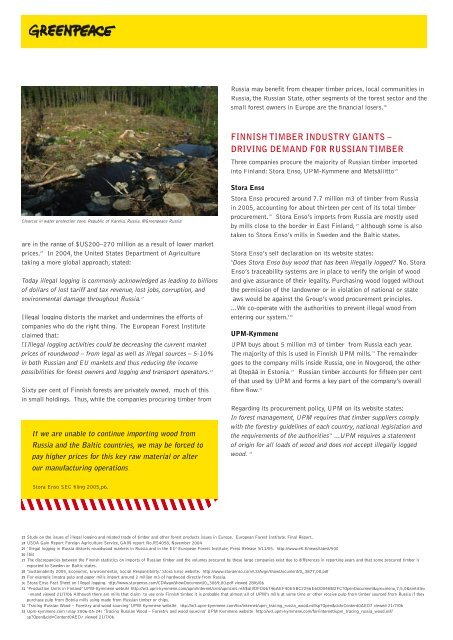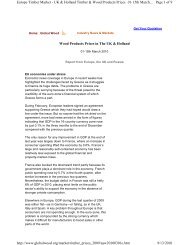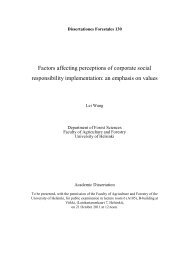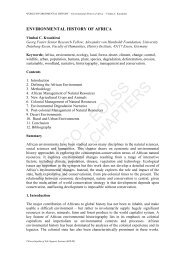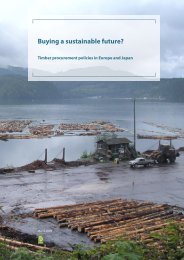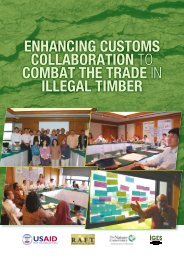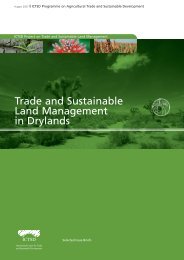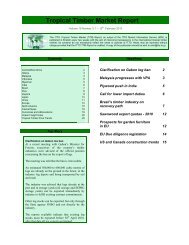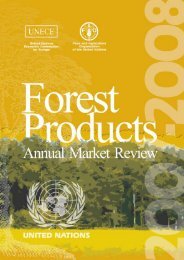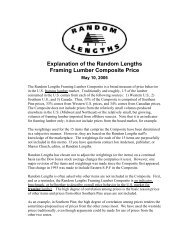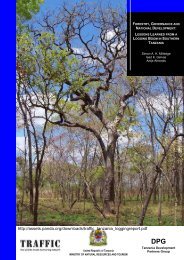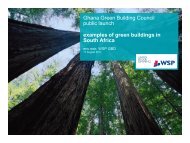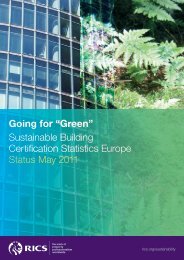A Greenpeace investigation into Finland's Illegal Timber Trade With ...
A Greenpeace investigation into Finland's Illegal Timber Trade With ...
A Greenpeace investigation into Finland's Illegal Timber Trade With ...
Create successful ePaper yourself
Turn your PDF publications into a flip-book with our unique Google optimized e-Paper software.
Russia may benefit from cheaper timber prices, local communities in<br />
Russia, the Russian State, other segments of the forest sector and the<br />
small forest owners in Europe are the financial losers. 26<br />
FINNISH TIMBER INDUSTRY GIANTS –<br />
DRIVING DEMAND FOR RUSSIAN TIMBER<br />
Three companies procure the majority of Russian timber imported<br />
<strong>into</strong> Finland: Stora Enso, UPM-Kymmene and Metsäliitto .27<br />
Clearcut in water protection zone, Republic of Karelia, Russia. ©<strong>Greenpeace</strong> Russia<br />
are in the range of $US200–270 million as a result of lower market<br />
prices. 23 In 2004, the United States Department of Agriculture<br />
taking a more global approach, stated:<br />
Today illegal logging is commonly acknowledged as leading to billions<br />
of dollars of lost tariff and tax revenue, lost jobs, corruption, and<br />
environmental damage throughout Russia. 24<br />
<strong>Illegal</strong> logging distorts the market and undermines the efforts of<br />
companies who do the right thing. The European Forest Institute<br />
claimed that:<br />
[I]llegal logging activities could be decreasing the current market<br />
prices of roundwood – from legal as well as illegal sources – 5-10%<br />
in both Russian and EU markets and thus reducing the income<br />
possibilities for forest owners and logging and transport operators. 25<br />
Sixty per cent of Finnish forests are privately owned, much of this<br />
in small holdings. Thus, while the companies procuring timber from<br />
If we are unable to continue importing wood from<br />
Russia and the Baltic countries, we may be forced to<br />
pay higher prices for this key raw material or alter<br />
our manufacturing operations.<br />
Stora Enso<br />
Stora Enso procured around 7.7 million m3 of timber from Russia<br />
in 2005, accounting for about thirteen per cent of its total timber<br />
procurement. 28 Stora Enso’s imports from Russia are mostly used<br />
by mills close to the border in East Finland, 29 although some is also<br />
taken to Stora Enso’s mills in Sweden and the Baltic states.<br />
Stora Enso’s self declaration on its website states:<br />
‘Does Stora Enso buy wood that has been illegally logged? No. Stora<br />
Enso’s traceability systems are in place to verify the origin of wood<br />
and give assurance of their legality. Purchasing wood logged without<br />
the permission of the landowner or in violation of national or state<br />
laws would be against the Group’s wood procurement principles.<br />
...We co-operate with the authorities to prevent illegal wood from<br />
entering our system.’ 30<br />
UPM-Kymmene<br />
UPM buys about 5 million m3 of timber from Russia each year.<br />
The majority of this is used in Finnish UPM mills. 31 The remainder<br />
goes to the company mills inside Russia, one in Novgorod, the other<br />
at Otepää in Estonia. 32 Russian timber accounts for fifteen per cent<br />
of that used by UPM and forms a key part of the company’s overall<br />
fibre flow. 33<br />
Regarding its procurement policy, UPM on its website states:<br />
In forest management, UPM requires that timber suppliers comply<br />
with the forestry guidelines of each country, national legislation and<br />
the requirements of the authorities 34 ...UPM requires a statement<br />
of origin for all loads of wood and does not accept illegally logged<br />
wood. 35<br />
Stora Enso SEC filing 2005,p6.<br />
23 Study on the issues of illegal logging and related trade of timber and other forest products issues in Europe. European Forest Institute. Final Report.<br />
24 USDA Gain Report Foreign Agriculture Service, GAIN report No.RS4058, November 2004<br />
25 ‘<strong>Illegal</strong> logging in Russia distorts roundwood markets in Russia and in the EU’ European Forest Institute, Press Release 3/11/05. http://www.efi.fi/news/latest/500<br />
26 Ibid<br />
27 The discrepancies between the Finnish statistics on imports of Russian timber and the volumes procured by these large companies exist due to differences in reporting years and that some procured timber is<br />
exported to Sweden or Baltic states.<br />
28 ‘Sustainability 2005, Economic, Environmental, Social Responsibility.’ Stora Enso website. http://www.storaenso.com/CDAvgn/showDocument/0,,3877,00.pdf<br />
29 For example Imatra pulp and paper mills import around 2 million m3 of hardwood directly from Russia.<br />
30 Stora Enso Fact Sheet on <strong>Illegal</strong> logging. http://www.storaenso.com/CDAvgn/showDocument/0,,3069,00.pdf viewed 28/6/06<br />
31 ‘Production Units in Finland’ UPM-Kymmene website http://w3.upm-kymmene.com/upm/internet/cms/upmcms.nsf/$all/DFD06746AEF40E5BC2256E6D004BB2FC?OpenDocument&qm=menu,7,5,0&smtitle=<br />
Finland viewed 21/7/06 Although there are mills that claim to use only Finnish timber, it is probable that almost all of UPM’s mills at some time or other receive pulp from timber sourced from Russia if they<br />
purchase pulp from Botnia mills using made from Russian timber or chips.<br />
32 ‘Tracing Russian Wood – Forestry and wood sourcing’ UPM Kymmene website http://w3.upm-kymmene.com/for/internet/upm_tracing_russia_wood.nsf/sp?Open&cid=Content0AED7 viewed 21/7/06<br />
33 Upm-kymmene.com (may 2006-05-24) ‘Tracing Russian Wood – Forestry and wood sourcing’ UPM Kymmene website http://w3.upm-kymmene.com/for/internet/upm_tracing_russia_wood.nsf/<br />
sp?Open&cid=Content0AED7 viewed 21/7/06


